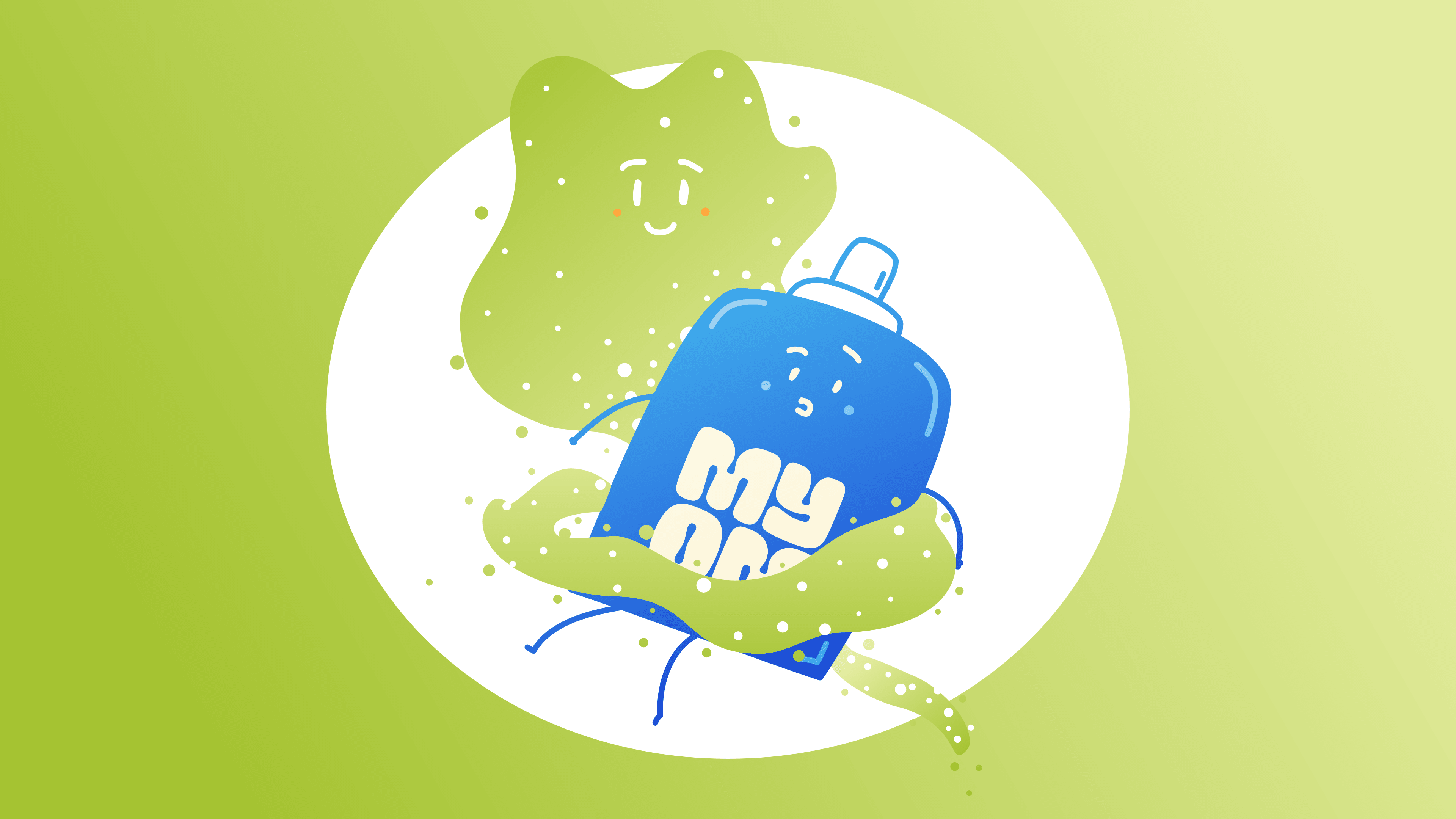In recent years, the alternative milk market has seen significant growth, offering numerous options beyond traditional cow's milk. Among these alternatives, oat milk and pea milk have gained popularity due to their distinct flavours, nutritional profiles, and eco-friendly qualities.
What is Oat Milk?
Oat milk has emerged as one of the creamiest and most versatile plant-based milk options available. Made by soaking oats in water, blending, and then straining, oat milk offers a naturally sweet and mild flavour profile. It is favoured for its ability to replicate the creamy texture of dairy milk, making it ideal for coffee, cereal, baking, and cooking.
Crafted from a delightful blend of oats, MYOM Oat Milk is leading a dairy revolution, prioritising sustainability and nutrition.
Enriched with essential nutrients like calcium, iodine, vitamin B12, and D3, MYOM is designed to nourish both individuals and the planet. With MYOM Original Oat Drink Blend, simply mix water, give it a shake, and enjoy a versatile and delicious oat milk drink. Plus, it requires no refrigeration until ready to enjoy, perfect for on-the-go lifestyles.
What is Pea Milk?
Pea milk is a plant-based milk alternative made from yellow peas. It's typically produced by grinding yellow peas into a fine powder, which is then mixed with water and other ingredients such as vitamins, minerals, and flavourings.
Pea milk is known for its creamy texture and slightly sweet taste, making it a popular choice for those who are lactose intolerant, allergic to nuts or soy, or following a vegan diet. It's also a good source of protein and can be used in cooking, baking, or enjoyed on its own as a beverage.
Nutritional Comparison
Oat milk tends to be higher in carbohydrates and fibre, while pea milk is richer in protein and lower in carbohydrates.
Oat Milk
- Fibre: Oat milk can provide a decent amount of fibre, typically around 2-4 grams per cup, depending on whether it's fortified.
- Vitamins and Minerals: Oat milk is often fortified with vitamins such as vitamin D, vitamin A, calcium, and sometimes vitamin B12, making it a good alternative for those seeking added nutrients.
- Protein: Oat milk tends to have less protein compared to pea milk, usually around 3-4 grams per cup.
Oat milk and pea milk offer distinct nutritional profiles to suit different preferences and dietary needs. Oat milk provides a creamy texture with higher carbohydrates and fibre, while pea milk offers superior protein content. Choosing between them depends on individual tastes, dietary restrictions, and nutritional goals, both contributing to diverse plant-based options for healthier living.
Pea Milk
- Calories: Pea milk usually contains fewer calories than oat milk, around 70-100 calories per cup, again depending on the brand and any additives.
- Carbohydrates: Pea milk typically has fewer carbohydrates than oat milk, usually around 4-8 grams per cup.
- Fat: It contains a similar amount of fat to oat milk, roughly 4-6 grams per cup.

Taste and Texture
Oat milk tends to have a sweeter, creamier taste with a thicker texture, while pea milk has a more neutral taste and a smoother, thinner texture. Both milks can be enjoyable alternatives to dairy milk, depending on personal preference and intended use.
Oat Milk
- Taste: Oat milk has a mild, slightly sweet flavour with a hint of oatiness. It's often described as creamy and comforting, with a taste reminiscent of oats or oatmeal.
- Texture: Oat milk has a creamy texture that's similar to dairy milk. It's smooth and can be quite thick, especially if it contains additives like gums or thickeners. Some people enjoy the creamy mouthfeel of oat milk in coffee or cereal.
Pea Milk
- Taste: Pea milk has a more neutral taste compared to oat milk. It doesn't have a strong flavour of its own, making it versatile for use in various recipes. Some people find pea milk to have a slightly nutty or earthy undertone, but it's generally milder than other plant-based milks.
- Texture: Pea milk typically has a thinner texture compared to oat milk. It's smoother and silkier, with a consistency similar to skim milk. Pea milk may not be as creamy as oat milk, but it still blends well in beverages and can be used in cooking and baking.
Using Versatile Oat Milk and Pea Milk
Both oat milk and pea milk offer versatility in various recipes and beverages, enhancing both taste and nutrition.
Oat Milk
- Beverages: Great for adding richness and thickness to coffee, tea, and smoothies.
- Baking: Works well in baking recipes such as muffins, pancakes, and cakes, providing moisture and a subtle oat flavour.
- Versatility: Can be used as a dairy milk substitute in cereal, oatmeal, and other breakfast dishes.
Pea Milk
- Neutral taste: This makes it versatile for various recipes without altering the flavour significantly.
- Protein: Ideal for those seeking a higher protein content in their milk alternative.
- Cooking: Suitable for cooking savoury dishes like soups, sauces, and creamy pasta, adding creaminess without overpowering other flavours.
Oat milk boasts a creamy texture and subtle sweetness, making it versatile for use in beverages, baking, and breakfast dishes. Pea milk, with its neutral taste and higher protein content, is suitable for a wide range of recipes without altering flavours, particularly in savoury dishes and beverages where a protein boost is desired.
Both milks offer flexibility in culinary applications, catering to different taste preferences and dietary requirements.
Environmental Considerations
Oat Milk
- Sustainable farming practices: Maximising water and land resources effectively.
- Environmental goals: Choosing oat milk supports a greener future in line with environmental values.
Pea Milk
- Environmentally mindful cultivation: Maximises the efficient use of land and water resources, reducing environmental strain.
- Advocates for sustainability: Selecting pea milk showcases a dedication to supporting eco-friendly practices.
Both Pea and oat milk both prioritise sustainable cultivation methods, supporting eco-friendly practices and a greener lifestyle.
By choosing MYOM oat milk, consumers actively engage in promoting sustainability, positively influencing the environment with every sip towards a greener tomorrow.
Health Considerations
Both pea and oat milk offer health benefits, with pea milk typically higher in protein and oat milk often fortified with essential nutrients like calcium and vitamin D, providing options that cater to various dietary needs and preferences.
Oat Milk
- Oat milk tends to be higher in carbohydrates and calories compared to pea milk.
- Some individuals may find oat milk easier to digest due to its smoother texture and lower protein content.
Pea Milk
- Pea milk often contains more protein per serving than oat milk.
- Pea milk may cause digestive discomfort in some individuals due to its higher protein content and the presence of oligosaccharides.
Conclusion
In conclusion, Oat milk comes through with its creamy texture and natural sweetness, while pea milk packs a punch with its higher protein content and smooth consistency. Both options are eco-friendly and cater to various dietary needs, making them solid contenders in the plant-based beverage scene. Ultimately, whether you go for oat milk or pea milk boils down to your personal taste, nutritional requirements, and values. Exploring these options opens up a world of tasty and sustainable alternatives to traditional dairy, so go ahead and discover what works best for you!
Whether you prefer the creamy consistency of oat milk or the smooth richness of pea milk, both options provide delicious and nutritious alternatives for those exploring plant-based milk.
At MYOM, we're dedicated to crafting a one-of-a-kind oat milk experience that seamlessly merges taste, convenience, and sustainability. Our focus is on minimising environmental footprint while maximising nutritional benefits, so every sip not only delights your taste buds but also contributes to a healthier planet.




